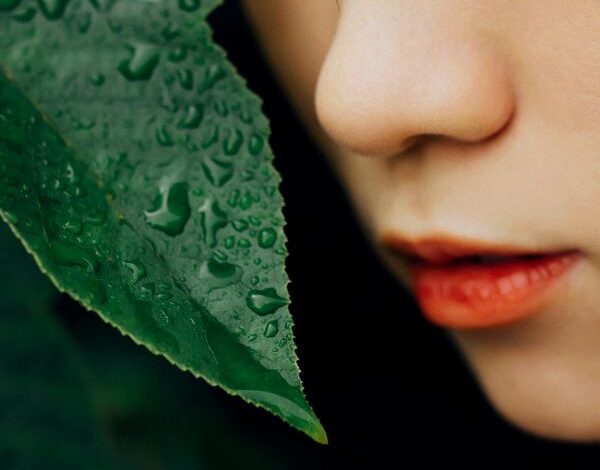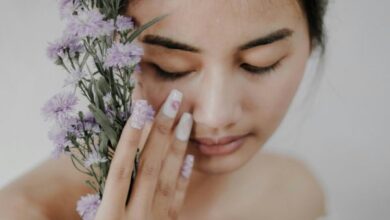Keep oily skin glowing in monsoon with home care

 With the monsoon arriving, are you worried about your oily skin? Does the excessive humidity adversely affect your skin? Well, you are not alone.
With the monsoon arriving, are you worried about your oily skin? Does the excessive humidity adversely affect your skin? Well, you are not alone.
As the raindrops dance upon the earth, the monsoon season casts a refreshing spell. The monsoon season, though refreshing, can be harsh on the skin, especially for those with oily skin types.
The surge in humidity level triggers increased sebum production. Results? Clogged pores, breakouts and skin dullness.
Excess oil on the skin leads to clogging of pores, allowing dirt and grime to settle on the face. This invites various skin concerns, like pimples, dehydrated skin and breakouts.
With expert tips and thoughtful care, you can ensure your skin glows like a summer rain, brimming with health and radiance.
Dab the oil away
Mastering the art of blotting is a game-changer for those with oily skin. Blotting papers/ tissue papers and medicated pads can usually help absorb excess oil from the skin’s surface and keep your skin feeling fresh. This helps prevent clogged pores and breakouts, common concerns for oily skin during the rainy season.
Keep blotting papers/ tissue papers or oil-absorbing sheets on hand to gently dab away excess oil without disturbing your makeup or skincare.
Blotting papers are inexpensive and available over the counter. They will allow you to blot excess oil from your face to help minimise shine.
Use the plain white kind that you use to wrap presents. Avoid getting coloured tissue paper, since it can bleed on your skin. Applying excessive pressure is unnecessary.
People can gently press blotting papers or pads against the skin for a few seconds. It’s best to use a new paper or pad when it becomes filled with oil or debris to maintain a fresh and dry complexion.
Cleanse with neem
Known for its antibacterial, antifungal, and anti-inflammatory properties, neem is a trusted and age-old remedy for several skin issues.
Neem is rich in Vitamin E, Calcium and limonoids, and has been used to treat various skin concerns, from acne to dryness and even eczema.
Neem oil regulates sebum, which balances your skin’s natural oils. This prevents excess oil that causes acne and keeps your skin properly moisturised.
Neem fights acne-causing bacteria and helps clear breakouts. It regulates sebum production, reducing excess shine and preventing new breakouts. Neem also helps reduce acne scars over time.
To cleanse oily skin with neem, you can use a neem-based face wash or make a neem paste with other ingredients, like yoghurt or turmeric. A neem face wash can be used daily, while a face mask with neem can be used weekly for deeper cleansing.
Neem oil has a particularly strong odour. To disguise it, try mixing neem oil with a carrier oil, such as jojoba, coconut, or almond oil. Carrier oils also help the skin absorb neem oil.
Cleanse your skin with lemon
Lemon, a natural cleanser, is helpful for oily skin. Lemon juice contains astringent qualities that close up the pores and reduce the amount of oil produced, leading to fresh skin with less shine. It can be used to cleanse the skin as it has natural antibacterial and exfoliating properties.
Alpha Hydroxy Acids and Beta Hydroxy Acids present in lemon remove dead skin cells. It helps in minimising blackheads and acne and lightens the skin. Vitamin C present in lemon averts fine lines and wrinkles. A facewash prepared with lemon and honey does the cleansing. Apply the face wash and wash it off after 10-15 minutes with lukewarm water for that bright and radiant look.
However, it’s crucial to dilute lemon juice and do a patch test with the rich citrus, as it can cause irritation or sensitivity, especially for those with dry or sensitive skin.
Take a couple of diluted lemon juice drops and apply them to a small section of your face. The best place to do a patch test is on your jawline, behind your ear, or on a small section of your cheek. Observe the section for 24-48 hours for any sensitivity or irritation. If irritation occurs, it is best to stop using it immediately.
The best way to use lemon on your face is to dilute one part lemon with two parts water. If you are adding lemon juice to a DIY face mask, make sure you are not adding more than a couple of drops.
Keep it minimal
Sometimes less is more, especially during the monsoon. Embrace minimal makeup during the monsoon to lessen the worries of touch-ups. A tinted lip balm, a bit of concealer, and waterproof mascara can go a long way in keeping your look fresh and simple.
A minimal monsoon makeup look not only feels lighter and more comfortable but also reduces the risk of makeup mishaps. Focus on a few key areas, like a bright lip colour or defined eyes, and keep the rest of your makeup simple and natural. To control unwanted grease and shine, switch from liquid or cream-based foundations and concealers to powder bases. Work in setting powder in light layers and build coverage gradually as you go for a soft, natural glow that will also blur pores and give you a flawless, ready-to-click complexion.
Use a light dusting of translucent powder to set your makeup. Focus on the T-zone and other areas prone to oiliness. Let your skin breathe freely, avoiding heavy makeup that may feel suffocating amid humidity.
Heavy makeup can clog the skin pores and cause breakouts. Avoid layering makeup products on your face because this can make your makeup feel heavy and increase the chances of it sliding off.
Dramatic eyes and heavy makeup must be kept aside because they may lead to runny makeup in high humidity.
Banner image by RANkzl: https://www.pexels.com/photo/close-up-of-leaf-with-water-droplets-and-face-32688927/




